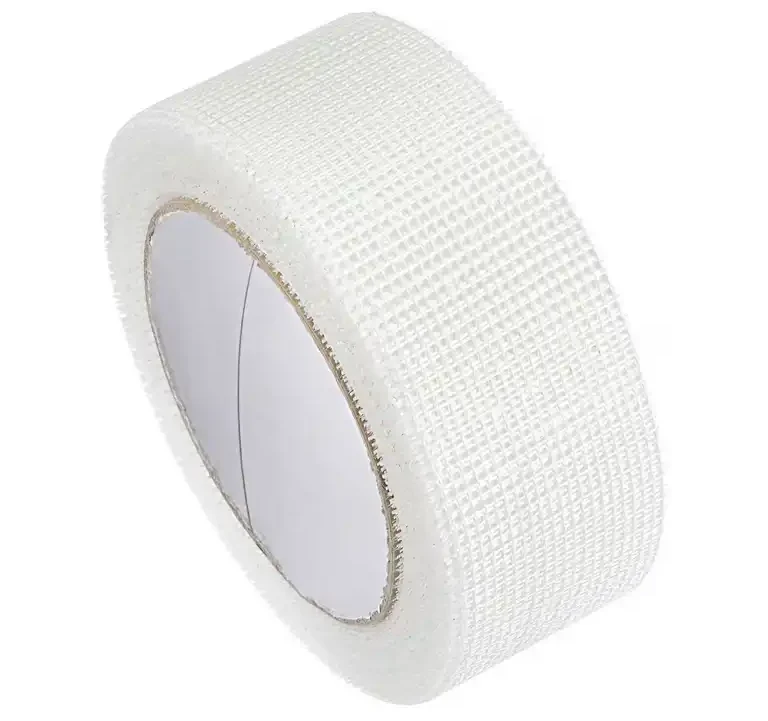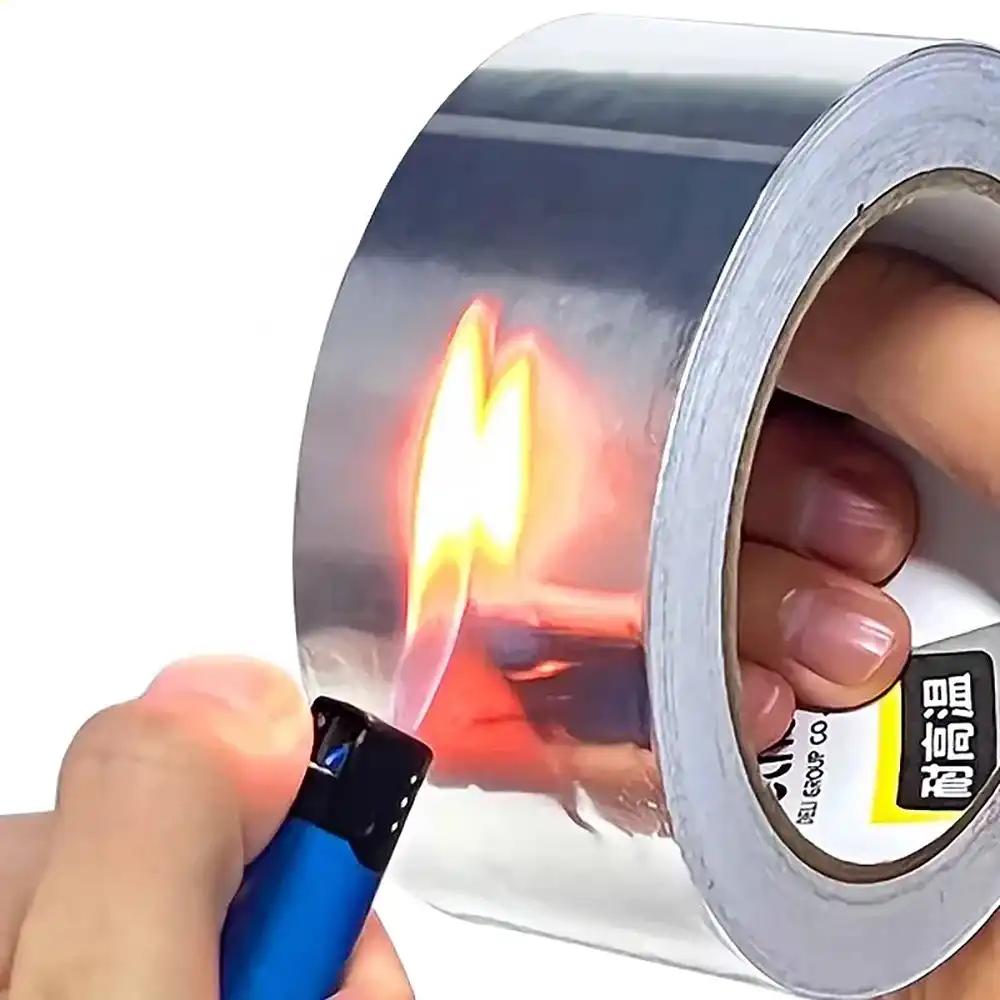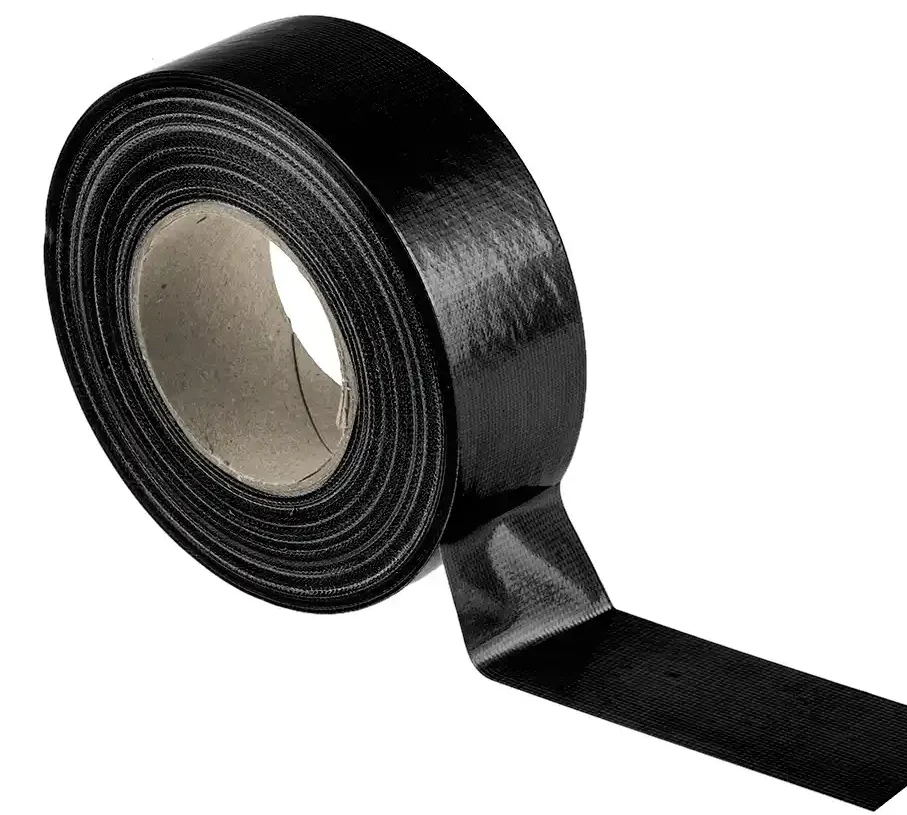- +86-13775339109
- Jessica@nq-fiberglass.cn
- No 61 Fangxian, Danyang, Jiangsu
Drywall tape for home renovations is a joint reinforcement material that is used to bridge seams between gypsum boards and prevent cracks. Wider tapes assist with butt joints, while corner tape with metal or plastic strips reinforces angles. To select wisely, consider wall placement, moisture, and aptitude.
Drywall tape is a thin strip of paper or fiberglass that bridges seams between plasterboard panels so the joint compound can set into one smooth plane. It doesn’t provide mechanical strength; it prevents hairline cracks from appearing along joint lines by binding the compound together. It rests atop butt joints and tapered joints, approximately half the tape width on each board, so the gap is covered and the compound can adhere as a single layer.
In fact, in certain parts of the country, they refer to it as scrim. The majority of tape is paper or fiberglass mesh. Paper integrates well with non-setting compounds and provides a nice smooth finish. Mesh is self-adhesive and combines ideally with setting-type compounds to eliminate bubbles and minimize shrink-back. Either way, the tape allows you to keep the compound thinner because it sits on a flat, stable surface.
Drywall tape sizes and styles influence the appearance and durability of seams. Widths typically hover around 50 mm. You’ll find 1.97-inch and 2-inch tapes for the majority of work, with longer rolls preferred on large projects. Narrower tape is good for small repairs, while wider tape can assist you in covering broader voids.
Paper joint tape glues up nicely with all-purpose or setting compound at wallboard seams and crisp inside corners. A width of 50 mm (roughly 1.97–2 in.) suits common bevels, and rolls come in different lengths. Long rolls reduce waste on entire rooms.
Its fiber structure flexes at angles and lays flat, so paint won’t telegraph a mesh grid. The finish sands smooth on seams and inside corners. Proper embed is the key. Embed in a new coat, center the crease at corners, press out air with a knife, and keep the compound thin to avoid blisters and wrinkles. A bad embed results in pops and joint failure.
Fiberglass mesh tape accelerates placement because it self-adheres, so there’s no first coat under the tape. This comes in handy on ceilings, patch jobs and working alone.
Mesh fights cracking on butt joints, patches and mixed substrates. Put your setting-type joint compound over it for strength and improved moisture resistance, especially in kitchens and utility rooms. Choose 50mm mesh for standard seams and broader mesh for huge holes and difficult areas. It’s a durable option in chokepoints such as hallways.
FibaFuse combines a fiberglass mat with a paper-like smooth finish, minimizing ridges. The thin profile helps conceal joint lines on long-lit walls, where raking light exposes imperfections.
It is mold and mildew resistant, making it great for bathrooms and basements when used in conjunction with a specialized moisture resistant board. DIYers and pros love that it works like paper but performs like fiberglass. Sizes of Drywall Tape cut to shape for irregular cracks and larger patches without bulk.
Metal-reinforced tape, usually paper with steel or aluminum strips, creates sharp, durable corners and shields outside angles from carts, bags and everyday dings. It keeps your edges nice and straight on tall walls and soffits.
Layer on top of paper or mesh at ceiling-wall joints, or stair runs that receive impact. Sizes of Drywall Tape: Use on decorative trims and complex angles where a crisp line matters, standard widths for most corners, and longer lengths for continuous runs to reduce joints.
Drywall tape varies by material, width, and application. Match tape and tools to the joint type, moisture level, and your skill.

Paper tape is the classic. It’s easy to use both on flats and inside corners, adheres well with ready-mix compound, and remains flat under paint. It’s available in widths from tiny 1.7 to 1.8 inches (43 to 46 mm) for repairs, medium 2 to 2.5 inches (51 to 64 mm) for seams, and wide 6 inches or more (150 mm or more) for specialty reinforcement or trims. Price is minimal, but it requires solid skill to prevent bubbling.

Self-adhesive mesh is fast to install and ideal for crack-susceptible areas, ceiling seams and wet rooms due to its moisture-resistant fiberglass and moderate elasticity. It usually runs a bit more than paper and can leave a subtle texture if you cheat on skim coats. Take sanding blocks or a pole sander to between coats and after the last pass. Select fine grits to prevent scratching the face paper. Sand lightly so you don’t gouge into the compound or reveal the mesh.

In fire-rated assemblies, use tapes and joint compounds approved for the particular wall system. Keep a set of knives: 4 inches (100 mm) for bedding, 6 inches (150 mm) for fill, and 10 to 12 inches (250 to 300 mm) for feathering. Flexible blades flex to blend edges, and stiff blades seat tape and push out excess mud. Discard often to avoid ridges. Keep blades with guards to save edges and service life.

Projects in damp zones get the added benefit of mold-resistant tapes and compatible compounds. Anticipate this stuff to continue shifting toward tougher moisture barriers, improved bio-resistance and lower VOC binders. New tools seek to quicken work and improve finish quality for both professionals and meticulous do-it-yourselfers. Specialty tapes and smart add-ons will continue to expand choices for challenging substrates.

Good stuff and consistent technique are all that counts in baths, kitchens, and basements. Employ moisture-rated tape along with setting-type compounds on first coats, then finish with ready-mix. Take your time: even thin coats beat thick, rushed fills. Match tape width to joint and substrate, and keep learning new products so results hold up.
Select tape appropriate for the joint, the finish level, and the room. Strike a balance between strength, speed, and cost. Select your tape carefully. Know the board type, humidity, and tools you intend to use.
Paper tape or FibaFuse is optimal for long seams between neighboring sheets. They glue up close, conceal the seam and decrease the possibility of cracking with age. Paper provides a marginally stronger joint, which counts on ceilings or busy walls.
Keep outerwear slim. Begin with a shallow bed, set tape, then skim. Once dry, apply a wider second coat. Thin coats dry quicker and are easier to sand.
Go with creased paper tape or metal-reinforced tape for that razor fold and razor alignment. Paper is a shining star here because it will hold the angle and stick great in the corner.
Clean the mud bed, expel air, and wipe each side from apex out. Wrinkles or gaps are an open door for future demise. On large tasks, automatic corner irons accelerate and maintain lines consistently.
Mesh tape or small drywall strips deal with holes and stress cracks. Adhesive mesh lies flat over jagged cuts. Prepare your space because dust kills bond.
Apply compound in several coats, feathering a wide area, and sanding between lifts. Big patches might require a tape that is 150 millimeters or larger or a repair panel.
Damp areas, such as baths, kitchens, and basements, should opt for fiberglass mesh or FibaFuse with a mold- and mildew-resistant compound. Paper can peel, bubble, or mold under humidity.
Make sure it is compatible with your waterproofing membranes and tile backer finishes. Tape, mud, and topcoat all need to work as one system.
Drywall tape provides the foundation for a fresh wall. Great tape saves time, reduces rework, and holds seams close. Mesh makes fast patch jobs easier. Paper provides robust joints on long seams. Fiberglass with mold guard is perfect for damp rooms like baths.
Need help with picks and links? Leave your room size, drywall tape selection, and budget. I’ll give you a quick list.

Connect with an NQ expert to discuss your product needs and get started on your project.
Contact NowWhat sizes does drywall tape come in?
Most drywall tape is 2 inches wide. Rolls differ in length, typically ranging from 23 meters to 75 meters. There are wider mesh tapes for special repairs. Make sure the width corresponds to your joints and the roll length to your project size to minimize waste.
What are the main types of drywall tape?
The most popular types are paper tape, fiberglass mesh, and fiberglass paper-faced (ultrathin). Paper provides robust seams and sleek surfaces. Mesh is quick and is great for fixes, particularly with setting compound. Paper-faced metal tape works great in corners.
Which drywall tape should I choose for beginners?
Go with fiberglass mesh for fast, easy patching. It self-adheres and centers with ease. For whole-room projects, paper tape provides stronger, crack-resistant joints when embedded properly with joint compound. Use paper-faced metal tape for crisp corners.
Can I use mesh tape with premixed joint compound?
Yes, it is safer with setting-type compound to prevent bubbling and cracks. Premixed compound, if applied carefully and thinly, will work. Press on mesh tight and cover. For high-stress seams, paper tape with premixed mud is more dependable.
Is drywall tape mold-resistant?
Most fiberglass mesh tapes are mold and mildew resistant. Regular paper tape is not, although some paper tapes include mold resistant additives. In humid regions, combine mold resistant tape with moisture resistant drywall and adequate ventilation.